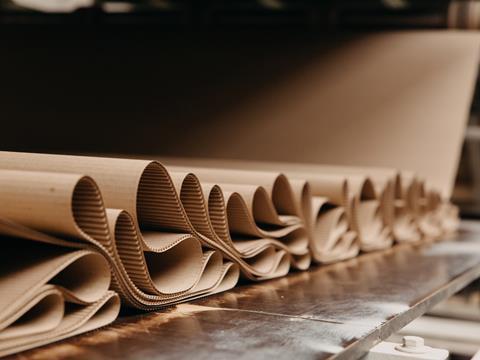
2023 has been a bumpy year for businesses and consumers alike, with rising inflation and interest rates, and a cost-of-living crisis. Against this backdrop, how have the European corrugated and folding cartons sectors faired? Neil Osment, Managing Director of paper packaging industry analysts NOA, takes a look.
When we look back on the European paper packaging industry for 2023, at first glance it may not seem entirely positive.
In the European corrugated market, we have had two years of falling demand, with -6% (2022) and -4% (2023), so cumulatively more than a -10% dip. This is in sharp contrast to 2021, when we saw growth of +8.5% during the year.
For folding cartons in Europe, the drop has been gentler. In 2022 there was a small growth of +1.5%, and 2023 saw a drop of -3.8%. Again, by contrast, 2021 was positive for growth at +3.4%.
So, why was there a spike of demand in 2021? For corrugated, the big increase in 2021 was in part due to the rise of e-commerce fuelled by consumers working from home; for folding cartons the main factor was rising demand for food and drink (which similarly boosted demand for corrugated).
However, corrugated demand has fallen away sharply since the highs of 2021 as e-commerce has dropped back. Big sellers – such as Amazon in the UK and Europe, retailers Zalando in Germany and El Corte Inglés in Spain – had stockpiled product in 2021 and have spent the last two years running this down.
Demand for folding cartons (and also for corrugated) has been adversely affected by a disrupted supply chain in the food sector; the war in Ukraine and issues in the supply chain for ingredients from China (still affected by Covid lockdowns) have contributed to this.
So, we’ve seen an exaggerated rise and fall in demand for corrugated, and a gentler but nonetheless significant rise and fall in demand for folding cartons. It’s important to note that the softer drop in demand for folding cartons is partly due to its increasing use as a plastic substitute, and we’ve talked many times about how paper-based packaging is being more widely adopted for food, beverages and other consumables by brand owners.
However, the outlook isn’t all gloom and doom. In terms of demand, we are now at levels last seen in 2019 for corrugated, and for folding cartons we’re at 2020 levels.
We are cautiously optimistic for 2024. We predict growth of +2% for folding cartons and +1.9% for corrugated, through organic growth and – in relation to cartons – through plastic substitution as a significant proportion too.
But, of course, we have external factors on the horizon to consider. 2024 brings MEP elections in June, which may throw the spotlight on, and alter the balance of, the reuse versus recycling argument and the future direction of travel of PPWR. There are the US elections and, likely at some point, there will be an election in the UK too.
For a clearer view of the future, it’s useful to look at what the brand owners are doing. They are reacting to what consumers want, which is a reduction in plastic packaging and cheaper prices.
In response, there is a move to thinner containers (such as cans and plastic bottles) which, as they are more fragile, need transporting in thicker corrugated boxes. Because of labour shortages, there is also a definite move towards more automation, which itself will impact on packaging styles and formats.
In summary, 2024 should bring some opportunities for positive news, as brand owners seek to steer through potential political upheaval and satisfy consumer demand.
If you liked this article, you might also enjoy:
The L’Oréal approach to packaging sustainability
The way we talk about plastic needs to change – here’s how to get it right
What steps is Apple taking to make its packaging more sustainable?











No comments yet